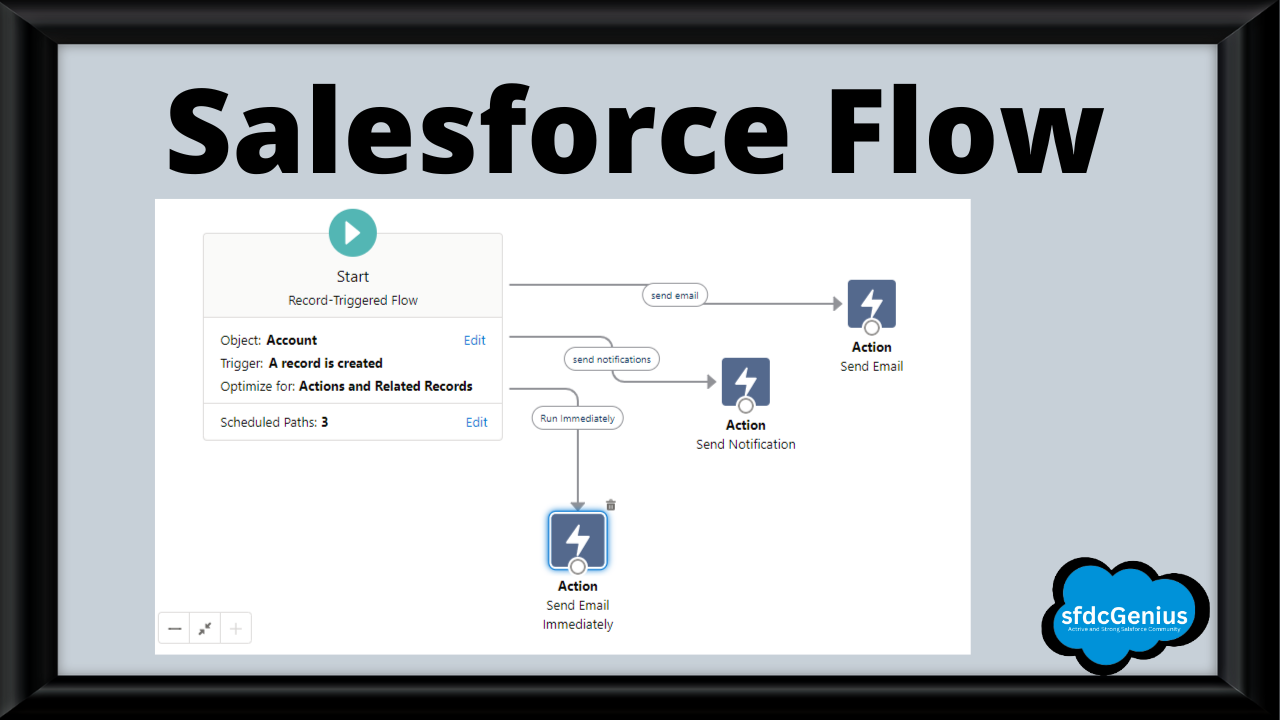Salesforce Flow is a powerful tool that enables Salesforce users to automate complex business processes by building custom, visual workflows. With Flow, users can automate data entry, create guided business processes, and streamline approvals, among other things. In this article, we’ll take a closer look at what Salesforce Flow is, how it works, and some of its key benefits.
Table of Contents
What is Salesforce Flow?
Salesforce Flow is a drag-and-drop tool that allows users to create custom workflows without any coding knowledge. With Flow, users can automate repetitive or time-consuming tasks, create guided business processes, and streamline approvals. Flows can be triggered by a variety of events, such as a record being created or updated, a user clicking a button, or a time-based event.
How does Salesforce Flow work?
Salesforce Flow is built on top of the Lightning Platform, which provides a range of tools and services for building custom applications. Flows are built using a visual interface, which allows users to drag and drop elements onto a canvas to create a workflow. Each element represents a specific action or decision point and can be configured to perform a wide range of actions, such as creating records, updating fields, sending emails, or calling external services.
Flows can be triggered in a number of ways, including through a button on a record page, a custom link, or a time-based event. Once a flow is triggered, it runs through a series of steps, which can include user input, decision points, and automated actions. Flows can also integrate with other Salesforce features, such as process automation and the Lightning App Builder, to provide a fully customizable user experience.
Benefits of Salesforce Flow
Salesforce Flow offers a number of benefits to users, including:
- Streamlined business processes: With Flow, users can automate complex business processes, such as onboarding new employees or managing customer support cases. This can help to reduce errors, save time, and improve the overall efficiency of the organization.
- Customizable user experience: Flows can be integrated with other Salesforce features, such as process automation and the Lightning App Builder, to provide a fully customizable user experience. This can help to improve user adoption and drive greater engagement with the platform.
- No coding required: With Flow, users can build custom workflows without any coding knowledge. This makes it easy for non-technical users to create and manage complex business processes.
- Greater flexibility: Flows can be triggered in a variety of ways, and can be configured to perform a wide range of actions. This gives users greater flexibility to create custom workflows that meet their specific business needs.
Conclusion
In conclusion, Salesforce Flow is a powerful tool that enables users to automate complex business processes and streamline approvals. With its visual interface and drag-and-drop functionality, Flow makes it easy for users to build custom workflows without any coding knowledge. Whether you’re looking to automate data entry, create guided business processes, or streamline approvals, Salesforce Flow can help you achieve your goals and drive greater efficiency in your organization.
more details: flow


